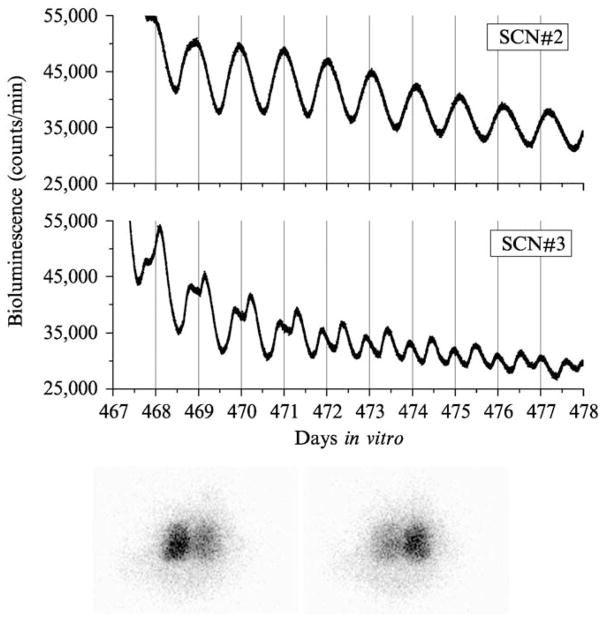Figure 2.
Circadian rhythms of Per1<luc activity from long-term cultured rat SCN. Four SCN explants were made and maintained in vitro for a long period of time. Two examples of the luminescence rhythms are shown (top). Although SCN#2 showed robust unimordal rhythms all the time, the peak of the rhythms in SCN#3 started breaking down into two components at 468 days in culture and both peaks were phase locked at 180° of the phase (bimodal). At the end of the recording (478 days), SCN#3 explants were transferred to the luminescence imaging setup and images were obtained using an ICCD camera (VIM, photon counting mode with 25-min exposure) at 30-min intervals. We were able to confirm the paired SCN structure in 478-day-old SCN explants. On the first image (bottom left), the left side of the SCN showed a significantly stronger signal than the one on the right side, indicating that the peak, which occurred on the vertical lines (top) came from the left side of the SCN. The image 12 h later (bottom right) shows that the right side of the SCN is brighter than the left side.

